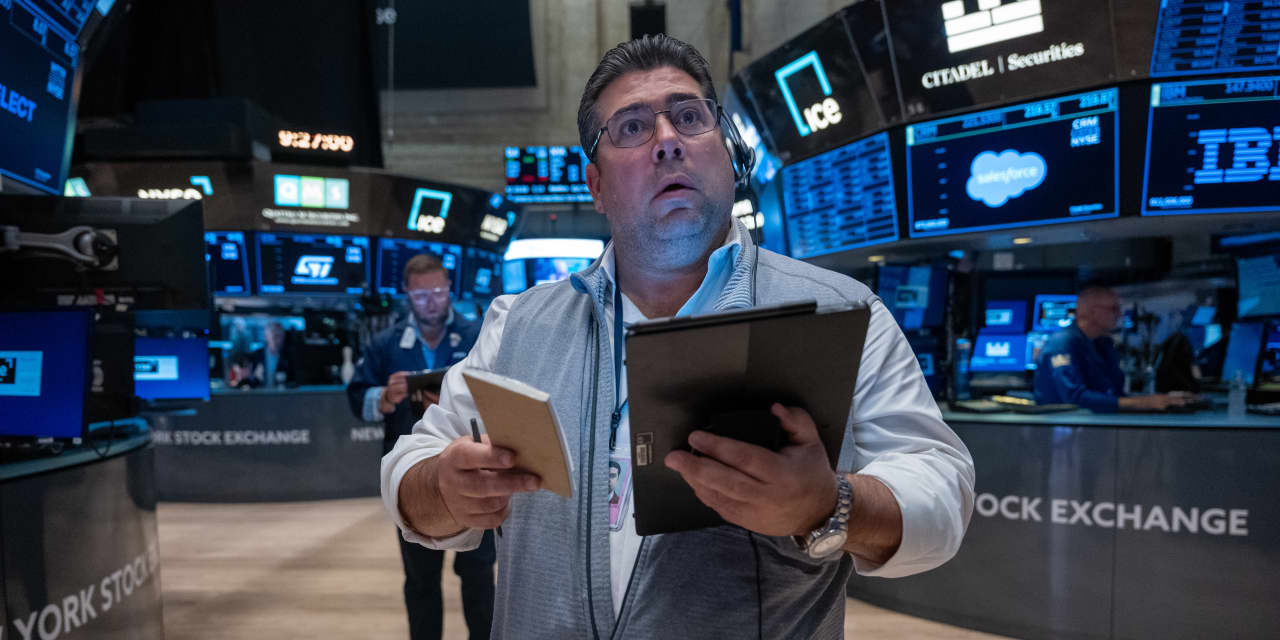The world is on the verge of a volatility eruption. At least that’s what Goldman Sachs is telling its clients.
Many investors already feel that they are making financial decisions amid heightened macro-risk factors that are concealed by the languid, range-bound nature of markets.
But looming geopolitical risks, the continuing efforts of central banks to reduce inflation without sparking economic recessions, and the threat of a U.S. government shutdown can be easy to dismiss until something volcanic occurs that removes all doubt.
The impetus for a rerating of risk—and a potential decline in stocks and an increase in options volatility—could arrive in October, according to John Marshall, Goldman’s derivatives strategist.
Marshall wrote in a recent note that options volatility for the
S&P 500 index
has spiked an average of 27% from August to October for the past 95 years. He also found that average realized volatility in October was markedly higher than the average of other months over the past 95 years for the S&P 500, and over the past 40 years or more for the
Nasdaq 100
and the
Russell 1000
and
2000
indexes.
His strategy team consequently has told clients to be cautious on selling options—a perennially popular trade—due to seasonal increases in volatility and a heavy corporate calendar for earnings reports and other financial updates.
In October, Marshall noted, corporate management teams are under heightened pressure to meet full-year earnings expectations because time is running out. Investors who manage money for other people also confront the tyranny of time. If they have failed to satisfy annual performance goals, they are under intense pressure.
Those two forces can make October unforgiving for any company that fails to impress when reporting earnings, hosting investor-day meetings, and issuing financial guidance for the coming year. Market volumes reveal the ferocity of investor reactions.
“Indeed, shares and single stock options volumes over the past 26 years have peaked in the month of October on average, with especially strong fourth-quarter seasonality in the past few years,” Marshall wrote.
To profit from the anticipated disruption, Marshall has advised clients to consider buying October call options on the
Cboe Volatility Index,
or VIX, to hedge portfolios against expected stock market weakness.
The VIX, which was recently around a subdued 14, is a tracking index that isn’t traded. To monetize the VIX to profit from potential market chaos, investors buy VIX call options, which have a reputation for being like S&P 500 options on steroids.
When the S&P 500 declines, the fear gauge, as the VIX is known, tends to increase. Interest in VIX call options has been rising.
Alison Edwards, a Susquehanna Financial Group strategist, has advised clients of significant VIX “tail-risk hedging.” Tail-risk hedges are usually inexpensive trades with big payoffs if the stock market collapses. One recent trade, for instance, would increase in value if the VIX spiked to $47.50 in March. Other tail-risk hedges traded in November and December VIX options.
Portfolio hedging and VIX spikes are currently attracting a lot of attention, but Marshall expects that trading in individual stocks will return to favor when investors become more confident that central banks are nearing the end of market disruptive interest-rate increases.
Steven M. Sears is the president and chief operating officer of Options Solutions, a specialized asset-management firm. Neither he nor the firm has a position in the options or underlying securities mentioned in this column.
Email: editors@barrons.com
Read the full article here









Leave a Reply